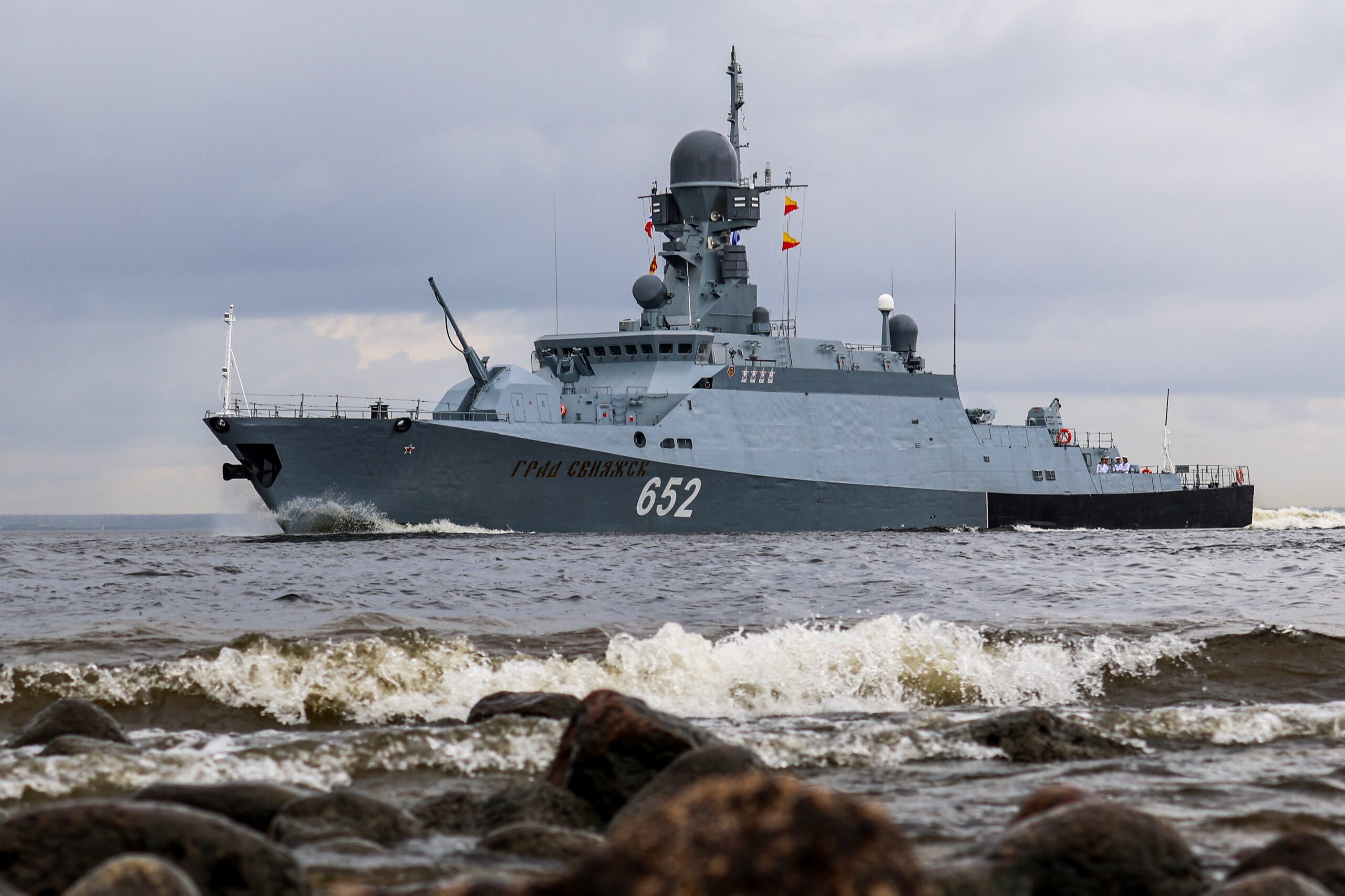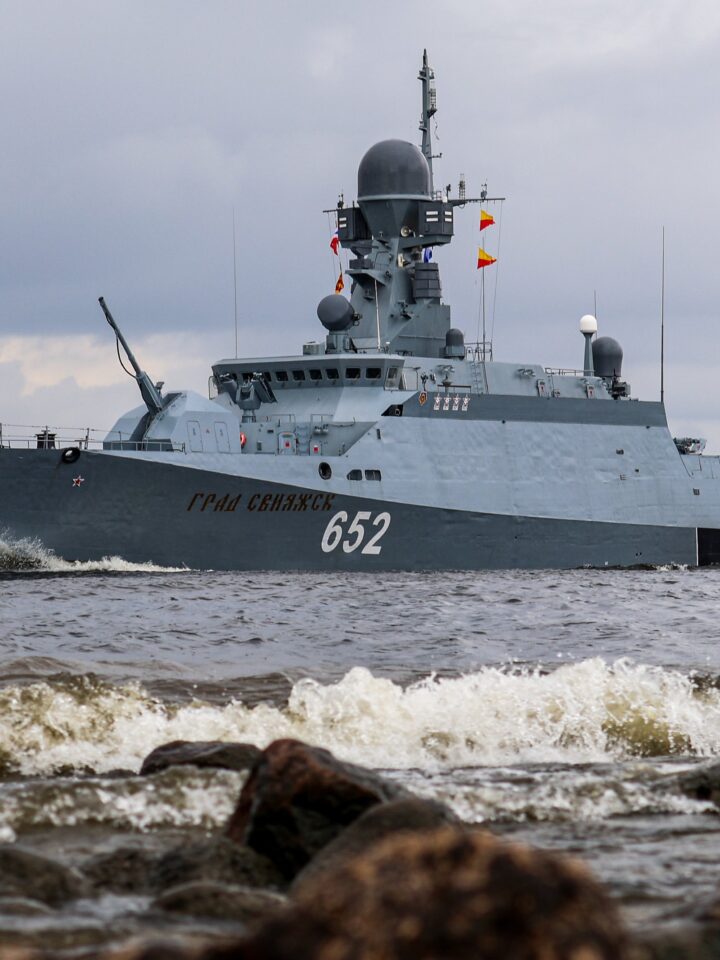Speaking at a conference in Germany on 19 July about a new ‘Eastern Flank Deterrence Line’ plan that aims to improve NATO’s ground-based capabilities, General Chris Donahue, the Commander of US Army forces in Europe and Africa, noted that NATO now has the ability to deter Russian aggression by destroying Russia’s anti-access/area denial capability in Kaliningrad at unprecedented speed.
In Moscow, this was interpreted as a signal that NATO no longer rules out the possibility of direct military confrontation. While the Kremlin understands the strategic risks of direct conflict with NATO, it sees the Alliance’s current institutional and political fragmentation as an opportunity to intensify pressure by hybrid means. If Europe proves unable to respond even to limited provocations, Moscow may interpret this as an invitation to act – even in defiance of common sense.
How political divisions are undermining Europe’s defences
A potential Russian attack on NATO member states is now regularly discussed in Europe. Although the war in Ukraine has been underway for more than three years, and the leaders of Central and Eastern European countries have consistently warned of a growing threat from Russia, NATO members only agreed to a substantial increase in defence spending in June 2025.
The countries closest to the declared benchmark of 5 per cent of GDP are those that border Russia: Poland (4.12 per cent of GDP), Estonia (3.43 per cent), and Latvia (3.15 per cent). In absolute terms, the biggest defence budgets in Europe are those of Germany ($97 billion), the United Kingdom ($82 billion), and France ($64 billion). Some other member states – including Belgium, Croatia, Italy, Montenegro and Spain – have yet to reach even the 2 per cent target that was set more than a decade ago.
At the same time, Russia’s defence spending today exceeds Europe’s as a whole. In 2024, Russia’s defence budget reached 13.1 trillion roubles, or $462 billion in purchasing power parity (PPP) terms – $5 billion more than the total defence expenditure of the EU and the UK, which stood at $457 billion.
NATO’s principal vulnerability lies not in the technical or financial domain, but in the uncertainty around how its member states would respond to an attack. Article 5 of the Washington Treaty does not oblige all members to use military force in the case of an attack on one or more of them, but simply requires them to take the action they deem necessary to restore and maintain security. NATO is also a consensus-based organisation. To deploy its collective defence capabilities requires the agreement of all its member states. In view of the Trump administration’s scepticism about the value of alliances and its intention to scale back US involvement in Europe’s security, there are increasing doubts about the commitment of the United States to the defence of its allies and the possibilities for using NATO’s collective defence mechanisms.
The Kremlin is watching these developments very closely and positioning itself to take advantage of the gradual withdrawal of US forces from Europe in the hope of encouraging deeper splits in the Alliance. It has been Moscow’s goal since the creation of NATO to break the transatlantic alliance. It believes it has never been closer to achieving this objective.
A systemic hybrid threat: how Russia is destabilising Europe
It is no coincidence that Russia’s hybrid activity in Europe is intensifying and becoming increasingly systemic. Its tools range from sabotage of infrastructure to interference in the information space and attempts to influence political developments.
Since October 2023, the Baltic region has seen more than ten incidents of damage to underwater power and telecommunications cables, with possible Kremlin involvement. In several cases, the damage was reportedly caused by the anchors of ships with Russian crews.
Across Europe, individuals acting on behalf of Russia have been arrested for gathering intelligence and preparing acts of sabotage targeting critical infrastructure. Several arrests have taken place in Germany, Poland and Switzerland. Cyber and electronic attacks – including GPS jamming, hacking of transport networks, attacks on logistics systems, and aviation disruptions – have been reported in Estonia, Finland, Lithuania, the Netherlands, Poland, and Norway.
In addition, Russian influence agents have been spreading disinformation and content aimed at fuelling anti-Ukrainian sentiment. Groups engaged in disseminating fake news and manipulative content in Russia’s interests have been uncovered in Austria, France and Germany, among others. Moscow has also faced repeated accusations of attempted electoral interference in Georgia, Moldova, and Romania.
The number of such incidents has grown steadily in recent years. The primary aim of this ‘soft aggression’ is to foster a sense of vulnerability within European societies. Yet these provocations could easily escalate to limited kinetic actions – such as border violations or strikes against military targets – with the same goal: to test NATO’s response and expose Europe’s inability to defend itself.
Limited preparedness: why Russia needs time
Russia’s reliance on hybrid methods is largely explained by its current unpreparedness for direct military confrontation with NATO. Although the war in Ukraine has led to an increase in Russia’s military capabilities, some experts believe that it would take four to five years for the country to accumulate the resources required to sustain a full-scale war lasting one year. Others believe that it could take at least a decade to rebuild the armed forces after the war in Ukraine.
While the Russian economy remains relatively resilient, the defence-industrial complex is already operating at full capacity and requires technological modernisation to expand production. This will be highly challenging for as long as western sanctions remain in place, since China is not keen on providing Russia with technologies that could allow it to become an industrial competitor.
Meanwhile, if NATO member states were to reach the new defence spending target of 5 per cent of GDP, their combined expenditure on defence would double to approximately $950 billion in 2024 prices. To maintain strategic parity with Europe alone – excluding the United States and other Western allies – Russia would need to increase its defence spending to 9–11 per cent of GDP, a level that is difficult to reconcile with domestic needs and economic stability. This is a source of serious concern in the Kremlin.
A further deterrent to direct military escalation is the continued presence of US troops in Europe. Any attack on US personnel – even on a limited scale – could be perceived by Washington as a direct threat, making hasty escalation highly risky for the Kremlin. Donald Trump’s order on 1 August to re-position two nuclear submarines in response to trolling by former President Medvedev took the Kremlin by surprise.
Russia’s strategic vulnerabilities also include the possibility of a blockade of the Baltic Sea. This would not only cut off Kaliningrad by sea, but impact Russian oil exports and other industries which use this route, notably ship-building.
To reduce its dependence on the Baltic, Russia is investing in alternative infrastructure in the North and East, modernising the port of Murmansk and developing new logistics hubs in the Arctic and the Russian Far East.
What do Russians think about the possibility of war with NATO?
Since the start of Russia’s full-scale invasion of Ukraine, public perceptions of the risk of conflict with NATO have gone through several phases. In May 2022, according to the Levada Centre, more respondents believed the war in Ukraine was likely to escalate into a conflict with NATO than not (48 per cent agreed, 42 per cent disagreed). By January 2023, the share of those who considered such an outcome likely had grown to almost two-thirds (62 per cent), but by December 2023, it had fallen to a low of 44 per cent. Over the past year, however, a stable majority of Russians have continued to view a conflict with NATO as a realistic possibility: 58 per cent in June 2024, and 56 per cent in June 2025.
Until the end of 2023, levels of public anxiety in Russia rose and fell in line with changing perceptions of the likelihood of a conflict with NATO. Since the summer of 2024, however, despite a growing number of people believing that escalation is possible, anxiety levels have remained relatively stable and significantly below their 2023 peak. Moreover, over the past year, rising expectations of a potential war with NATO have coincided with more positive views about the situation in Russia and the actions of the authorities.
In other words, Russians appear to have stopped viewing a potential war with NATO as a personal threat. This may be due to the belief that such a conflict would occur beyond the country’s borders and be fought by people with whom they do not directly identify – much like the war in Ukraine.
Ella Paneykah
Head of Sociology, NEST Centre
However, the potential consequences of a conflict with NATO could be far more dangerous than those of the invasion of Ukraine, and, unlike the war in Ukraine, could directly affect a broad segment of Russian society. Alongside the economic and military risks, the possibility of a public shock acts as an additional factor deterring the Kremlin from open escalation – at least at this stage.




